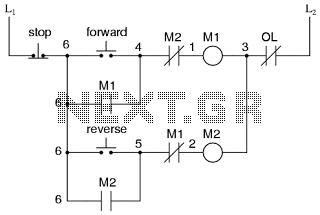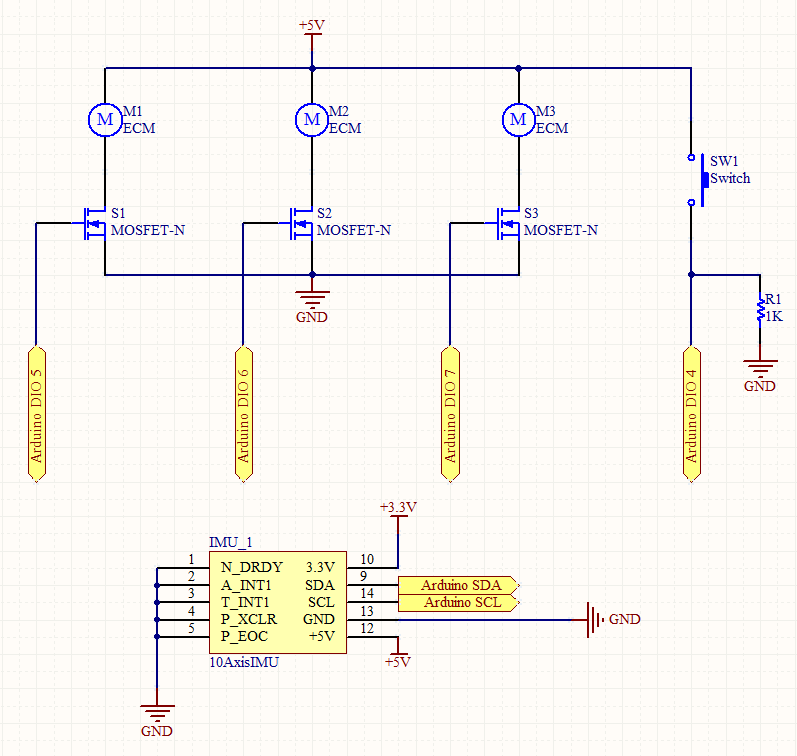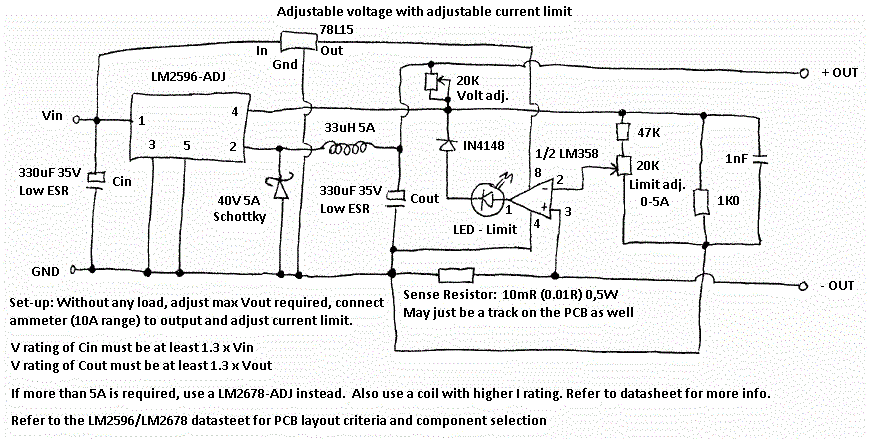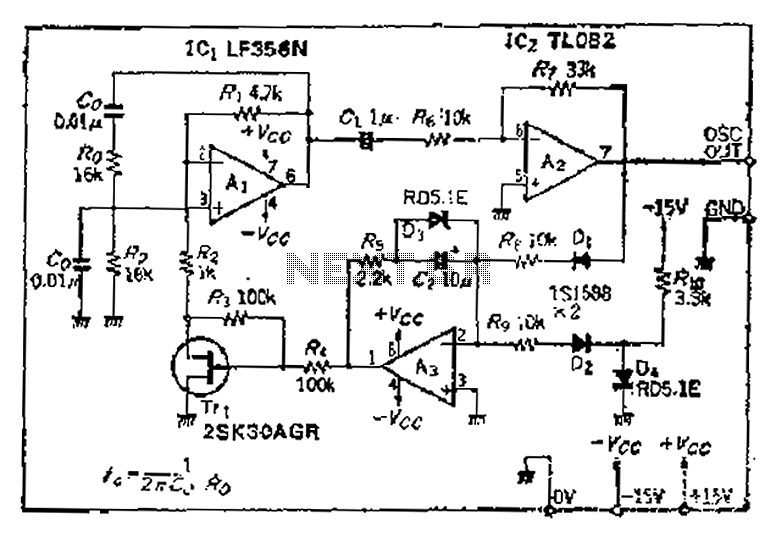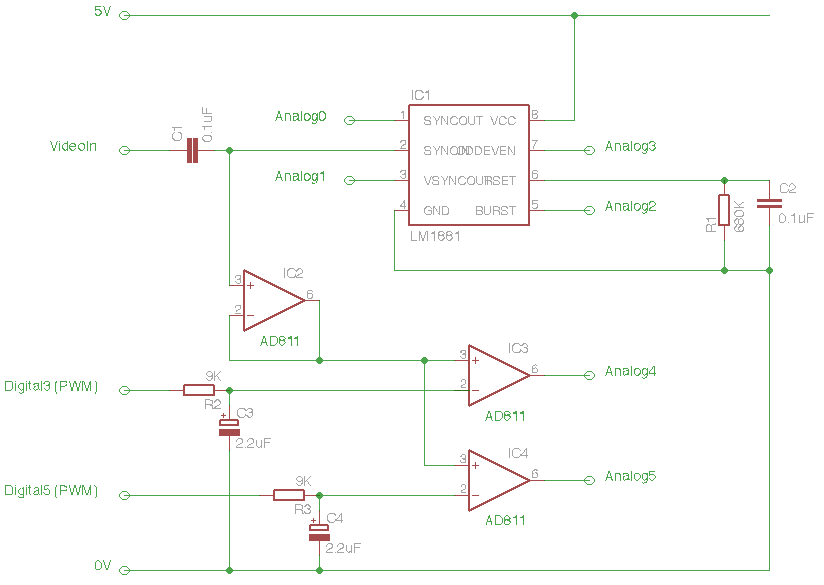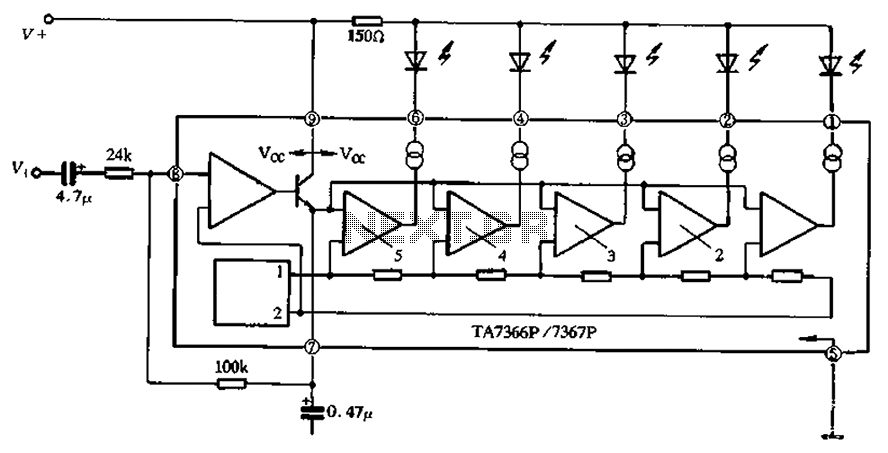Feedback Systems
1. Definition and Basic Concepts
Feedback Systems: Definition and Basic Concepts
A feedback system is a control mechanism where a portion of the output signal is fed back to the input to regulate system behavior. This closed-loop architecture enables dynamic adjustment, improving stability, accuracy, and robustness in engineering and physical systems. Feedback is ubiquitous in electronics (amplifiers, oscillators), mechanical systems (servo motors), and biological processes (homeostasis).
Fundamental Components
A feedback system consists of four primary elements:
- Plant (G) – The system being controlled (e.g., amplifier, motor).
- Feedback Path (H) – Measures or processes the output for comparison.
- Comparator – Computes the error between input and feedback signals.
- Controller – Adjusts the plant’s input based on the error.
Mathematical Representation
The closed-loop transfer function T(s) of a negative feedback system is derived from the forward path gain G(s) and feedback gain H(s):
For positive feedback, the denominator becomes 1 − G(s)H(s). The term G(s)H(s) is the loop gain, critical for stability analysis.
Types of Feedback
Negative Feedback
Reduces the error between input and output, enhancing stability and linearity. Dominates in amplifiers (e.g., op-amp circuits) and control systems (e.g., PID controllers).
Positive Feedback
Amplifies deviations, leading to saturation or oscillations. Used intentionally in Schmitt triggers and oscillator designs.
Practical Implications
Feedback alters system characteristics:
- Bandwidth: Negative feedback increases bandwidth at the cost of gain.
- Noise: Rejects noise within the loop bandwidth.
- Nonlinearity: Mitigates distortion in amplifiers.
`, ``, ``).
4. Incorporating an SVG diagram to visualize the feedback loop.
5. Balancing theory and applications (e.g., amplifiers, control systems).
6. Ensuring valid HTML with proper tag closure and semantic markup.
`). 4. Incorporating an SVG diagram to visualize the feedback loop. 5. Balancing theory and applications (e.g., amplifiers, control systems). 6. Ensuring valid HTML with proper tag closure and semantic markup.
1.2 Types of Feedback: Positive and Negative
Negative Feedback
Negative feedback occurs when a portion of the output signal is fed back out of phase with the input, reducing the overall gain while improving stability and linearity. Consider a basic feedback amplifier with forward gain A and feedback factor β. The closed-loop gain Af is derived as:
For large loop gain (Aβ ≫ 1), the equation simplifies to Af ≈ 1/β, making the system less sensitive to variations in A. This principle is exploited in operational amplifiers to achieve precise gain control. Negative feedback also reduces harmonic distortion and widens bandwidth, as described by the gain-bandwidth product relationship:
Positive Feedback
Positive feedback reinforces the input signal by feeding back an in-phase component, increasing gain at the cost of stability. The closed-loop gain becomes:
When Aβ → 1, the denominator approaches zero, leading to oscillation—a principle used in oscillator circuits like the Wien bridge or phase-shift oscillators. Positive feedback is also employed in Schmitt triggers for hysteresis, where the system maintains its state until the input crosses a threshold.
Stability Criteria
The Nyquist stability criterion and Bode plots are essential tools for analyzing feedback systems. For negative feedback, the phase margin (φm) must satisfy:
where fc is the crossover frequency. Positive feedback systems, by contrast, are designed to meet the Barkhausen criterion for oscillation:
Practical Applications
- Negative feedback: Audio amplifiers (THD reduction), voltage regulators (line/load regulation), and control systems (PID controllers).
- Positive feedback: Clock generators (crystal oscillators), comparators (Schmitt triggers), and RF circuits (tuned amplifiers).
Comparative Analysis
| Parameter | Negative Feedback | Positive Feedback |
|---|---|---|
| Gain | Reduced and stabilized | Amplified, potentially unstable |
| Bandwidth | Increased | Decreased (narrowed) |
| Noise Sensitivity | Lowered | Heightened |
1.3 Key Components of a Feedback Loop
A feedback loop consists of several essential components that work together to regulate a system's output based on its input and desired behavior. Understanding these components is critical for designing stable and responsive feedback systems in electronics, control theory, and signal processing.
1. Reference Input (Setpoint)
The reference input, often denoted as R(s) in the Laplace domain, represents the desired system output. In a closed-loop system, this serves as the target value that the feedback mechanism strives to achieve. For example, in a temperature control system, the setpoint is the desired temperature.
2. Sensor (Feedback Path)
The sensor measures the actual output Y(s) and converts it into a comparable form, usually scaled to match the reference input. The feedback signal B(s) is given by:
where H(s) is the transfer function of the feedback network. In many systems, H(s) is a simple gain factor, but it can also include filtering or dynamic compensation.
3. Error Detector (Comparator)
The error detector computes the difference between the reference input R(s) and the feedback signal B(s), producing an error signal E(s):
This error drives the system's corrective action. In operational amplifier circuits, a differential amplifier often serves as the comparator.
4. Controller (Compensator)
The controller processes the error signal to determine the appropriate corrective action. Common controller types include:
- Proportional (P): G_c(s) = K_p
- Integral (I): G_c(s) = \frac{K_i}{s}
- Derivative (D): G_c(s) = K_d s
- PID: G_c(s) = K_p + \frac{K_i}{s} + K_d s
5. Plant (System Under Control)
The plant, represented by G(s), is the physical system being controlled (e.g., a motor, thermal chamber, or amplifier). Its dynamics determine how the input signal U(s) (from the controller) affects the output Y(s):
6. Disturbance Input
External disturbances D(s) (e.g., load changes, noise) can affect the output. A well-designed feedback system minimizes their impact:
Practical Considerations
In real-world systems, nonlinearities (e.g., saturation, dead zones) and delays (e.g., sensor lag) must be accounted for. Stability analysis using Nyquist or Bode plots ensures the feedback loop does not oscillate uncontrollably.
2. Transfer Functions and Block Diagrams
Transfer Functions and Block Diagrams
Transfer Function Definition
The transfer function G(s) of a linear time-invariant (LTI) system is defined as the Laplace transform of the output response divided by the Laplace transform of the input signal, assuming zero initial conditions. Mathematically, for an input X(s) and output Y(s):
This representation is valid only for systems describable by linear differential equations with constant coefficients. The variable s represents the complex frequency σ + jω in the Laplace domain.
Poles and Zeros Interpretation
The transfer function can be expressed in factored form:
where zi are zeros (roots of the numerator), pi are poles (roots of the denominator), and K is the gain factor. The pole-zero plot directly reveals:
- Stability: All poles must lie in the left-half plane for bounded-input bounded-output (BIBO) stability
- Frequency response: Proximity of poles/zeros to the imaginary axis indicates resonant frequencies
- System order: The number of poles determines the order of the differential equation
Block Diagram Algebra
Complex systems are decomposed into interconnected blocks representing transfer functions. Three fundamental operations govern block diagram reduction:
- Series connection:
$$ G_{eq}(s) = G_1(s)G_2(s) $$
- Parallel connection:
$$ G_{eq}(s) = G_1(s) ± G_2(s) $$
- Feedback loop:
$$ G_{eq}(s) = \frac{G(s)}{1 ∓ G(s)H(s)} $$where H(s) is the feedback path transfer function
Mason's Gain Formula
For complex signal flow graphs, Mason's formula provides a systematic approach to determine the overall transfer function:
where:
- Pk = path gain of the kth forward path
- Δ = 1 - (sum of all individual loop gains) + (sum of gain products of two non-touching loops) - ...
- Δk = value of Δ for the part of the graph not touching the kth forward path
Practical Applications
In control system design, transfer functions enable:
- Stability analysis via Routh-Hurwitz or Nyquist criteria
- Frequency response prediction using Bode plots
- Controller design through pole placement techniques
- Disturbance rejection analysis in multivariable systems
Modern applications extend to:
- Power system stability studies
- Active noise cancellation systems
- Biological system modeling
- Quantum control systems
Computational Implementation
Transfer functions are implemented computationally using state-space representations for numerical stability:
where A, B, C, and D matrices are derived from the transfer function coefficients through canonical transformations.
2.2 Stability Analysis: Nyquist and Bode Plots
Nyquist Stability Criterion
The Nyquist criterion evaluates closed-loop stability by analyzing the open-loop transfer function L(s) in the complex plane. The principle relies on Cauchy's argument principle, mapping the contour of L(s) as s traverses the Nyquist path (a right-half-plane semicircle). The number of encirclements of the critical point (−1, 0) correlates with the poles of the closed-loop system:
where Z is the number of unstable closed-loop poles, P is the number of unstable open-loop poles, and N is the net clockwise encirclements of (−1, 0). For stability, Z must be zero.
Bode Plots and Gain-Phase Margins
Bode plots decompose L(jω) into magnitude (dB) and phase (degrees) versus frequency. Key stability metrics include:
- Gain Margin (GM): The dB difference from unity gain where phase crosses −180°.
- Phase Margin (PM): The phase difference from −180° at the crossover frequency (where gain = 0 dB).
Practical Interpretation
Robust systems typically require PM > 45° and GM > 6 dB. For example, a phase lag compensator might be added to improve PM by attenuating high-frequency gain. The Bode plot below illustrates these concepts:
Nyquist vs. Bode: Comparative Analysis
While Bode plots simplify frequency-domain design, Nyquist plots handle non-minimum-phase systems and open-loop instability more rigorously. For systems with delay e^{-sT}, Nyquist clearly reveals increasing encirclements as T grows, whereas Bode requires phase unwrapping.
shows spiraling Nyquist contours as T introduces progressive phase lag.
2.3 Root Locus Techniques
The root locus is a graphical method for analyzing how the poles of a closed-loop system move in the complex plane as a parameter (typically the gain K) varies from zero to infinity. It provides critical insights into stability, transient response, and robustness of feedback systems.
Fundamental Principles
The root locus is constructed based on the characteristic equation of the closed-loop transfer function:
where G(s) is the forward path transfer function, H(s) is the feedback path transfer function, and K is the variable gain. The root locus consists of all points s in the complex plane that satisfy the angle and magnitude conditions:
Construction Rules
The root locus plot adheres to a set of systematic rules:
- Number of branches: Equal to the number of poles of G(s)H(s).
- Symmetry: The locus is symmetric about the real axis.
- Real-axis segments: A segment lies on the real axis if the total number of poles and zeros to its right is odd.
- Asymptotes: For large K, branches approach asymptotes at angles:
where P and Z are the number of poles and zeros, respectively.
Breakaway and Break-in Points
These occur where multiple roots exist on the real axis. The breakaway point s satisfies:
For example, consider a system with poles at s = 0 and s = -2 and no finite zeros. The breakaway point is found by solving:
Angle of Departure and Arrival
The angle of departure from a complex pole or arrival at a complex zero is calculated using the angle condition. For a complex pole pi, the departure angle θd is:
where zj are zeros and pk are other poles.
Practical Applications
Root locus techniques are widely used in:
- Control system design: Adjusting gain K to meet stability and performance criteria.
- Robotics: Tuning PID controllers for optimal transient response.
- Aerospace: Analyzing stability margins in flight control systems.
Example: Second-Order System
Consider a system with:
The root locus starts at s = 0 and s = -4 and moves along the real axis until breaking away at s = -2. As K increases, the branches become complex and follow asymptotes at ±90°.
3. Feedback in Control Systems
Feedback in Control Systems
Feedback is a fundamental mechanism in control systems, where a portion of the output signal is returned to the input to regulate system behavior. The primary objective is to minimize error between the desired and actual output, enhancing stability, accuracy, and disturbance rejection.
Mathematical Representation of Feedback Systems
A generic feedback control system can be modeled using transfer functions. Let G(s) represent the open-loop transfer function of the plant and H(s) the feedback path transfer function. The closed-loop transfer function T(s) is derived as:
This equation highlights the critical role of the denominator 1 + G(s)H(s), known as the characteristic equation, in determining system stability.
Types of Feedback
Negative Feedback
Negative feedback reduces the error signal by subtracting the output from the reference input. It is widely used for stabilizing systems and improving linearity. The closed-loop gain A_f for an amplifier with open-loop gain A and feedback factor β is:
Positive Feedback
Positive feedback reinforces the input signal, leading to potential instability but useful in oscillators and hysteresis-based systems. The closed-loop gain becomes:
Stability Analysis
The Nyquist Stability Criterion and Bode Plots are essential tools for assessing feedback system stability. The Nyquist criterion evaluates encirclements of the critical point (-1, 0) in the complex plane, while Bode plots analyze gain and phase margins.
Phase Margin and Gain Margin
Phase margin (PM) is the additional phase lag required to make the system marginally stable at the gain crossover frequency. Gain margin (GM) is the reciprocal of the magnitude at the phase crossover frequency. Mathematically:
Practical Applications
- Operational Amplifiers: Negative feedback configures op-amps for precise gain control and impedance matching.
- PID Controllers: Proportional-Integral-Derivative controllers use feedback to minimize steady-state error and improve transient response.
- Phase-Locked Loops (PLLs): Feedback synchronizes the output frequency with a reference signal, critical in communication systems.
Case Study: Feedback in DC Motor Speed Control
A tachometer provides velocity feedback, which is compared with the desired speed to generate an error signal. The controller adjusts the motor input voltage to minimize this error, ensuring consistent speed under varying loads.
Here, K is the motor constant, J the inertia, B the damping coefficient, and K_e the back-EMF constant.
3.2 Feedback in Electronic Circuits
Feedback is a fundamental concept in electronic circuit design, enabling precise control over gain, bandwidth, impedance, and distortion. In electronic systems, feedback occurs when a portion of the output signal is returned to the input, either reinforcing (positive feedback) or opposing (negative feedback) the original signal. The analysis of feedback networks relies on loop gain, stability criteria, and transfer function manipulation.
Negative Feedback and Stability
Negative feedback reduces the overall gain of an amplifier but improves linearity, bandwidth, and noise performance. The closed-loop gain ACL of an amplifier with feedback is given by:
where AOL is the open-loop gain and β is the feedback factor. If AOLβ ≫ 1, the closed-loop gain simplifies to 1/β, making the system largely independent of variations in AOL.
Stability in feedback systems is determined by the phase margin, which must be positive to avoid oscillations. The Nyquist stability criterion and Bode plots are essential tools for analyzing loop gain AOLβ(jω) to ensure that the phase shift does not approach 180° at the frequency where the magnitude drops to 0 dB.
Positive Feedback and Oscillators
Positive feedback reinforces the input signal, leading to regenerative behavior. When the Barkhausen criterion is satisfied (AOLβ = 1 at a phase shift of 0° or 360°), the system oscillates. Common oscillator topologies include:
- LC Oscillators (Hartley, Colpitts): Utilize resonant LC tanks to set the oscillation frequency.
- Crystal Oscillators: Rely on the high-Q resonance of piezoelectric crystals for stable frequency generation.
- RC Phase-Shift Oscillators: Use cascaded RC networks to achieve the necessary phase shift.
Feedback Topologies in Amplifiers
Four primary feedback configurations exist, classified by whether the feedback signal is derived as a voltage or current and whether it is applied in series or parallel with the input:
- Voltage-Series (Shunt-Series): Reduces output impedance and increases input impedance (e.g., non-inverting op-amp).
- Voltage-Shunt (Shunt-Shunt): Lowers both input and output impedance (e.g., inverting op-amp).
- Current-Series (Series-Series): Increases input and output impedance (e.g., transconductance amplifier).
- Current-Shunt (Shunt-Series): Reduces input impedance while increasing output impedance (e.g., current amplifier).
Practical Considerations
Real-world feedback circuits must account for non-ideal effects such as phase lag, parasitic capacitances, and finite amplifier bandwidth. Compensation techniques, including dominant-pole compensation and Miller compensation, are employed to ensure stability. For instance, operational amplifiers often include internal compensation to prevent unwanted oscillations.
where GBW is the gain-bandwidth product. This relationship illustrates the trade-off between gain and bandwidth in closed-loop amplifiers.
3.3 Feedback in Biological Systems
Biological systems exhibit intricate feedback mechanisms that regulate physiological processes, maintain homeostasis, and enable adaptation. These mechanisms operate across molecular, cellular, and organismal scales, often resembling engineered control systems but with higher complexity and robustness.
Negative Feedback in Homeostasis
Negative feedback loops stabilize biological variables around setpoints. A classic example is glucose regulation in mammals:
where [G] is blood glucose concentration, α represents glucose production (primarily by the liver), and βI models insulin-dependent glucose uptake. The pancreas secretes insulin (I) proportionally to [G], creating a closed-loop system that maintains glucose levels within 70-120 mg/dL.
Positive Feedback in Biological Amplification
Positive feedback reinforces signals for rapid state transitions. Notable examples include:
- Action potential generation: Voltage-gated Na+ channels exhibit regenerative activation
- Blood clotting cascade: Thrombin activates its own production
- Ovulation: Estrogen stimulates luteinizing hormone surge
Ultradian and Circadian Rhythms
Biological oscillators employ delayed negative feedback. The Hes1 transcription factor system follows:
where m and p represent mRNA and protein concentrations, τ is the transcriptional delay, and γ the degradation rate. This creates oscillations with periods of 2-3 hours.
Robustness in Biological Feedback
Biological systems achieve robustness through:
- Redundant pathways: Multiple regulators for critical variables
- Adaptive setpoints: Dynamic adjustment of reference values
- Nonlinear responses: Thresholds and saturation effects
Comparative Analysis with Engineering Systems
| Feature | Engineering | Biological |
|---|---|---|
| Time constants | Fixed by design | Environmentally adaptive |
| Component failure | System collapse | Degraded performance |
| Noise handling | Filtered | Exploited for variability |
The integral feedback motif appears universally, from bacterial chemotaxis to mammalian immune responses, ensuring perfect adaptation through topological constraints rather than precise parameter tuning.
Evolutionary Design Principles
Biological feedback networks evolve under:
- Pareto optimality: Trade-offs between speed, accuracy, and energy cost
- Modularity: Reusable regulatory motifs (e.g., feedforward loops)
- Plasticity: Capacity for epigenetic modification
where ℱ represents fitness, Si are performance metrics, σi their tolerances, and E the metabolic cost.
4. Compensator Design
4.1 Compensator Design
Compensator design is a critical aspect of feedback control systems, ensuring stability, performance, and robustness. The compensator modifies the open-loop transfer function to meet desired closed-loop specifications such as phase margin, gain margin, and bandwidth. Three primary types of compensators are used: lead, lag, and lead-lag compensators.
Lead Compensator
A lead compensator introduces phase advance to improve transient response and increase the phase margin. Its transfer function is given by:
where Kc is the gain, z is the zero, and p is the pole. The maximum phase advance occurs at:
The phase boost at this frequency is:
Lead compensators are particularly effective in systems where the phase margin is insufficient, such as in servo motors and aerospace control systems.
Lag Compensator
A lag compensator improves steady-state accuracy by increasing low-frequency gain while minimally affecting the phase margin. Its transfer function is:
The pole and zero are placed close to the origin, ensuring minimal phase lag near the crossover frequency. Lag compensators are widely used in process control and power systems where steady-state error reduction is critical.
Lead-Lag Compensator
A lead-lag compensator combines the benefits of both lead and lag compensators. Its transfer function is:
where z1 < p1 (lead) and z2 > p2 (lag). This compensator is useful in systems requiring both transient response improvement and steady-state error reduction, such as in automotive cruise control.
Design Procedure
The compensator design process involves the following steps:
- Specify performance requirements: Define desired phase margin, gain margin, and bandwidth.
- Analyze the uncompensated system: Plot Bode or Nyquist diagrams to identify deficiencies.
- Select compensator type: Choose lead, lag, or lead-lag based on system needs.
- Place poles and zeros: Use root locus or frequency response techniques to position compensator dynamics.
- Verify performance: Simulate the compensated system to ensure requirements are met.
For example, in a phase-locked loop (PLL), a lead compensator can reduce lock time, while a lag compensator improves tracking accuracy.
Practical Considerations
Real-world compensator design must account for:
- Nonlinearities: Actuator saturation and sensor noise may limit compensator effectiveness.
- Digital implementation: Discretization effects must be considered when deploying compensators in microcontrollers or FPGAs.
- Component tolerances: Variations in resistor and capacitor values affect compensator performance.
Advanced techniques, such as H∞ and μ-synthesis, extend compensator design to multivariable and uncertain systems.
4.2 Sensitivity and Robustness
The performance of feedback systems is critically dependent on their ability to maintain stability and desired behavior in the presence of parameter variations, disturbances, and model uncertainties. Two key metrics quantify this capability: sensitivity and robustness.
Sensitivity Functions
The sensitivity function S(s) describes how variations in the open-loop transfer function L(s) affect the closed-loop transfer function T(s). For a standard unity feedback system:
The sensitivity is defined as the relative change in T(s) with respect to L(s):
At frequencies where |L(jω)| ≫ 1, the sensitivity approaches zero, indicating good disturbance rejection. Conversely, where |L(jω)| ≪ 1, S(jω) ≈ 1 and disturbances directly affect the output.
Complementary Sensitivity
The complementary sensitivity function T(s) = 1 - S(s) describes the system's response to reference inputs:
This represents the closed-loop transfer function from reference to output. The relationship S(s) + T(s) = 1 imposes fundamental design trade-offs between reference tracking and disturbance rejection.
Robust Stability
A system is robustly stable if it remains stable for all possible perturbations within a specified uncertainty set. For multiplicative uncertainties:
where Δ(s) is an unknown stable transfer function with ‖Δ‖∞ ≤ 1, and W(s) is a known weighting function. The robust stability condition becomes:
This small gain condition ensures stability for all admissible perturbations.
Performance Robustness
For performance robustness, we require the sensitivity function to remain small despite plant variations. The weighted sensitivity condition:
where W_p(s) is a performance weighting function, typically large at low frequencies where good disturbance rejection is required.
Design Trade-offs
The following fundamental limitations exist for any feedback system:
- Bode Sensitivity Integral: For open-loop stable systems, ∫₀^∞ log|S(jω)| dω = 0
- Waterbed Effect: Reducing sensitivity at some frequencies necessarily increases it at others
- Gain-Phase Relationship: The phase is constrained by the gain via the Hilbert transform
These constraints make simultaneous optimization of sensitivity and robustness challenging, requiring careful loop shaping.
Practical Applications
In aerospace control systems, robustness to aerodynamic parameter variations is critical. Flight controllers are designed to maintain stability across different flight envelopes by:
- Using μ-synthesis to handle structured uncertainties
- Incorporating gain scheduling for nonlinear operating regimes
- Implementing adaptive elements for unmodeled dynamics
Power electronic converters employ robust control to maintain regulation despite load variations and component tolerances, often using H∞ or sliding mode approaches.
4.3 Trade-offs in Feedback System Design
Feedback systems inherently involve trade-offs between stability, performance, and robustness. These trade-offs arise from fundamental limitations imposed by the loop gain, phase margin, and sensitivity functions. A well-designed feedback system must balance these competing requirements while maintaining closed-loop stability.
Stability vs. Performance
The primary benefit of feedback is performance improvement, typically quantified by the error reduction factor (1 + L), where L is the loop gain. However, increasing L to improve disturbance rejection or tracking accuracy risks instability. The Nyquist stability criterion imposes a hard constraint:
where ωc is the crossover frequency. Pushing for higher bandwidth (increasing ωc) typically reduces phase margin, creating an unavoidable trade-off.
Robustness vs. Sensitivity
The sensitivity function S = (1 + L)-1 determines how disturbances are attenuated. While minimizing S improves performance, Bode's Integral Theorem shows:
This implies that reducing sensitivity at one frequency band necessarily increases it elsewhere—a phenomenon known as the waterbed effect. Practical designs must allocate sensitivity reductions where most critical.
Gain Margin vs. Phase Margin
Classical control theory specifies minimum margins for robust stability:
- Gain margin ≥ 6 dB (factor of 2 in amplitude)
- Phase margin ≥ 45°
However, achieving both simultaneously becomes challenging in higher-order systems. Phase margin often dominates high-frequency stability, while gain margin primarily affects low-frequency robustness to parameter variations.
Sensor Noise Amplification
Feedback systems amplify sensor noise at frequencies where |T(jω)| > 1, with the complementary sensitivity function T = L(1 + L)-1. The noise amplification factor is:
Designers must limit bandwidth to avoid excessive noise gain, particularly in systems with low-resolution sensors or high ambient noise floors.
Actuator Saturation Effects
High feedback gains demand large actuator signals during transients, risking saturation. When saturated, the open-loop dynamics dominate, potentially causing:
- Integrator windup in PID controllers
- Loss of disturbance rejection
- Limit cycle oscillations
Anti-windup compensation and gain scheduling are common mitigation strategies, but these add complexity to the control law.
Multi-Variable System Considerations
In MIMO systems, the trade-offs manifest through the singular values of the sensitivity matrices. The Rosenbrock system norm provides a combined measure of performance and robustness:
where σ̄ denotes the maximum singular value. Decoupling the system through careful loop shaping can alleviate some trade-offs, but perfect decoupling is rarely achievable in practice.
5. Recommended Textbooks
5.1 Recommended Textbooks
- Feedback Systems An Introduction for Scientists and Engineers - NHBS — State Feedback 167 6.1 Reachability 167 6.2 Stabilization by State Feedback 175 6.3 State Feedback Design 183 6.4 Integral Action 195 6.5 Further Reading 197 Exercises 197 Chapter 7. Output Feedback 201 7.1 Observability 201 7.2 State Estimation 206 7.3 Control Using Estimated State 211 7.4 Kalman Filtering 215 7.5 A General Controller ...
- Feedback Control Systems | Rent | 9780131866140 | Chegg.com — COUPON: RENT Feedback Control Systems 5th edition (9780131866140) and save up to 80% on 📚textbook rentals and 90% on 📙used textbooks. Get FREE 7-day instant eTextbook access! ... home 📚 textbooksfeedback control systems 5th edition. Book Details. Full Title: Feedback Control Systems: Edition: 5th edition: ISBN-13: 978-0131866140 ...
- PDF Feedback Systems - cds.caltech.edu — This is the electronic edition of Feedback Systems and is available ... Chapter 5. Linear Systems 5-1 5.1 Basic Definitions 5-1 5.2 The Matrix Exponential 5-6 5.3 Input/Output Response 5-15 ... fashion compared to many other books on feedback and control .Inparticular,we
- PDF Feedback Systems - Caltech Computing — This version of Feedback Systems is the electronic edition of the text. Revision history: •Version2.10c(4Mar2010):thirdprinting,withcorrections ... 1.3 Feedback Examples 5 1.4 Feedback Properties 17 1.5 Simple Forms of Feedback 23 1.6 Further Reading 25 Exercises 25 ... fashion compared to many other books on feedback and control .Inparticular,we
- Feedback Control Systems / Edition 5 - Barnes & Noble — Feedback Control Systems, 5/e is ideal for junior/senior-level Control Theory courses in Electrical, Mechanical, and Aerospace Engineering. ... 5 1. 9780131866140. Home 1; Textbooks 2; ... A retired U.S. Navy Officer, he served as a Program Manager/Project Engineer at Naval Electronic Systems Command in Washington, DC and Officer in Charge ...
- Design of Feedback Control Systems / Edition 4|Hardcover — 5 1. 9780195142495. Home 1; Textbooks 2; ... Access code and/or supplemental material are not guaranteed to be included with used textbook. Instant Purchase. Instant Purchase New & Used from 259.99 In Stock Overview. Design of Feedback Control Systems is designed for electrical and mechanical engineering students in advanced undergraduate ...
- Feedback Control Systems: Charles L. Phillips, John M. Parr — Feedback Control Systems, 5e offers a thorough analysis of the principles of classical and modern feedback control in language that can be understood by students and practicing engineers with no prior background in the subject matter.Organized into three sections-linear analog control systems, linear digital control systems, and nonlinear analog control systems-this text helps readers ...
- Feedback Systems - Princeton University Press — This textbook covers the mathematics needed to model, analyze, and design feedback systems. Now more user-friendly than ever, this revised and expanded edition of Feedback Systems is a one-volume resource for students and researchers in mathematics and engineering. It has applications across a range of disciplines that utilize feedback in physical, biological, information, and economic systems.
- Feedback Control System—Characteristics and Performance — 5 Feedback Control System—Characteristics and Performance 5.1 OPEN-LOOP AND CLOSED-LOOP CONTROL SYSTEM Introduction to control system and the concept of feedback was introduced in Chapter 1. ... O'Reilly members experience books, live events, courses curated by job role, and more from O'Reilly and nearly 200 top publishers. Start your ...
- Feedback Systems: An Introduction for Scientists and Engineers — Feedback Systems is a complete one-volume resource for students and researchers in mathematics, engineering, and the sciences. Discover the world's research 25+ million members
5.2 Research Papers and Articles
- Artificial Intelligence for Assessment and Feedback to Enhance Student ... — From the reviewed articles and research papers, it is observed that most of the papers focus on the instructor to students' feedback, but there are also some pieces of literature that focus on peer-to-student feedback. ... This is the reason why e-assessment is the main focus area of learning analytics research. 5.2.4. Feedback Practices ...
- A systematic review of AI-based automated written feedback research — As can be observed, over half of the published research (57.6%) was mainly concerned with form-focused feedback, utilizing 12 distinct AWF systems to provide this feedback. Nineteen studies (22.4%) did not distinguish between different types of AWF, and used it the way it is provided by 10 different AWF systems.
- Personalized feedback in digital learning environments: Classification ... — Feedback research has a long tradition. Several meta-analyses summarized the research on feedback interventions (e.g., Bangert-Drowns et al., 1991; Kluger & DeNisi, 1996), and scholars proposed a variety of theoretical frameworks for feedback in digital and non-digital learning environments (e.g., Hattie & Timperley, 2007; Shute, 2008).The level of information in feedback messages is one key ...
- PDF Introduction to Feedback Systems - Cern — 10 Introduction to Feedback Systems, D. Bulfone Step 3. Design of the Appropriate Feedback Control : - While an open-loop Controller has no effect on the dynamics of the system, it does change it in a closed-loop feedback configuration. Feedback Control of Dynamic Systems Feedback Control of Dynamic Systems
- Automatic feedback in online learning environments: A systematic ... — In this context, this paper presents a systematic literature review focusing on tools and resources that enable automatic feedback in learning management systems.It allows the identification, evaluation, and interpretation of all available research relevant to a research question, subject, or event of interest (Kitchenham, 2004).Moreover, a literature review should conduct a critical ...
- Designing electronic feedback - Analyzing the effects of social ... — While the interface design of feedback systems is very important for Human-Computer Interaction studies, only a small number provides user evaluations of their designs (Froehlich et al., 2010). IS research currently lacks a systematic evaluation of design choices for feedback systems in their ability to influence perceived social presence.
- Students' perception towards using electronic feedback after the ... — larly, a research paper by (Leminen et al., 2018) has app roved the effectiveness of feedback with p atients which help in digitalizing the data and keeping records of patie nts.
- Automated feedback and writing: a multi-level meta-analysis of effects ... — As a further analysis, we examined whether the overall effect sizes differ when we ignore pre-test values from primary studies that provided them and calculated the effect sizes based only on the post-test values from the studies in concern (see Table 2).We observed an estimated average effect of g = 0.77 (SE = 0.20). The observed effects ranged from −1.14 to 3.61, with the majority of ...
- (PDF) Feedback from Digital Systems Used in Higher Education: An ... — In a different work, Saplacan et al. [23] suggest that feedback provided by digital systems in learning situations have some problems such as eliciting negative emotions (these are neglect ...
- Feedback Systems: An Introduction for Scientists and Engineers — This paper constructs a dynamic model of a general congestion-prone system using a nonlinear differential equation to represent the relation between throughput and the system load.
5.3 Online Resources and Tutorials
- PDF Feedback Systems - cds.caltech.edu — Chapter 3. Feedback Principles 3-1 3.1 Mathematical Models 3-1 3.2 Using Feedback to Improve Disturbance Attenuation 3-7 3.3 Using Feedback to Follow Command Signals 3-11 3.4 Using Feedback to Provide Robustness 3-14 3.5 Using Feedback to Shape Behavior 3-17 3.6 Feedback and Feedforward 3-20 3.7 Further Reading 3-27 Exercises 3-27 Chapter 4.
- PDF Feedback Systems - Caltech Computing — Chapter 5. Linear Systems 131 5.1 Basic Definitions 131 5.2 The Matrix Exponential 136 5.3 Input/Output Response 145 5.4 Linearization 158 5.5 Further Reading 163 Exercises 164 Chapter 6. State Feedback 167 6.1 Reachability 167 6.2 Stabilization by State Feedback 175 6.3 State Feedback Design 183 6.4 Integral Action 195 6.5 Further Reading 197 ...
- PDF Feedback Control of Dynamic Systems, 7/E — 1.1 A Simple Feedback System 23 1.2 A First Analysis of Feedback 26 1.3 Feedback System Fundamentals 30 1.4 A Brief History 31 1.5 An Overview of the Book 37 Summary 39 Review Questions 39 Problems 40 2 DynamicModels 43 A Perspective on Dynamic Models 43 Chapter Overview 44 2.1 Dynamics of Mechanical Systems 44 2.1.1 Translational Motion 44
- Feedback Systems: An Introduction for Scientists and Engineers, Second ... — 1.4 Use of Feedback and Control 1.5 Feedback Properties 1.6 Simple Forms of Feedback 1.7 Combining Feedback with Logic 1.8 Control System Architectures 1.9 Further Reading Exercises 2 Feedback Principles 2.1 Nonlinear Static Models 2.2 Linear Dynamical Models 2.3 Using Feedback to Improve Disturbance Attenuation 2.4 Using Feedback to Track ...
- PDF Electronic Feedback Systems: Solutions 11 - MIT OpenCourseWare — 5(3. x . 0~ 1)Is. I > 700. 14+ 1 (3.7 . X10 This has a pole at the origin, which represents the net effect of the two poles and the zero as seen at frequencies much greater . than 700 rad/sec. The higher frequency pole at s = - 3.7 X ... Electronic Feedback Systems: Solutions 11 Author: Roberge, James K. Created Date:
- PDF Feedback Fundamentals - Caltech Computing — tion 5.10 where we discuss the classical problem of design of feedback amplifiers. 5.2 The Basic Feedback Loop. A block diagram of a basic feedback loop is shown in Figure 5.1. The sys-tem loop is composed of two components, the process. P. and the controller. The controller has two blocks the feedback block. C. and the feedforward block. F
- PDF Electronic Feedback Systems: Lecture 11 - MIT OpenCourseWare — 11-4 Electronic Feedback Systems Comments Minor-loop compensation provides a preferable alternative to cas-cade compensation for many physical systems. Examples include servomechanisms using tachometric feedback and a number of available integrated-circuit operational amplifiers. The appropriate compensation for a particular application is ...
- PDF Feedback Systems - Massachusetts Institute of Technology — in Chapter 8, which is a fundamental tool for understanding feedback systems. Using transfer functions, one can begin to analyze the stability of feedback systems using frequency domain analysis, including the ability to reason about the closed loop behavior of a system from its open loop characteristics. This is the subject of
- PDF Fundamentals of Electronic Circuit Design - University of Cambridge — An intuitive way to understand the behavior of voltage and current in electronic circuits is to use hydrodynamic systems as an analogue. In this system, voltage is represented by gravitational potential or height of the fluid column, and current is represented by the fluid flow rate. Diagrams of these concepts are show in Figure 1.5 through 1.7 ...
- 5.3: Feedback Compensation - Engineering LibreTexts — Exercise \(\PageIndex{8}\) It was mentioned in Section 5.2.4 that alternative compensation possibilities for the gain-of-ten amplifier include lowering the magnitude of the loop transmission at all frequencies by a factor of 6.2 and lowering the location of the lowest-frequency pole in the loop transfer function by a factor of 6.2 by selecting appropriate lag-network parameters.
